Back 2004 my son Matthew and I decided to embark on a 4000k road trip to find one of Australia’s most enduring folk tales: the Wilga screaming ghost!
I have a theory that a book seeks you out. Particular books if you ignore them, tend to pop-up again and again. A book called “A treasury of Australian Folk Tales” written in 1960 by Bill Beatty found its way via various book stores and relatives to my attention. Inside it, a story called “Here’s a queer tale” caught my interest.
It tells of a screaming ghost, which apparently frequented the Wilga waterhole on the Barcoo river between the mid 1800’s and 1925. There have been many independent eyewitness accounts over the years, one interesting one states that during the height of the ear splitting phenomenon, the water on the surface of the waterhole remained undisturbed.
As far as the legend goes, there are a few variations on the story. The one in the book says: “The story is consistent always, nothing but a series of terrifying, fiendish yells and screams arising suddenly and dying away mysteriously into silence”. Most of the versions of the story tend to center around the woman living in the house. The book’s version says: “A new hand employed at Ruthven station built a slab and bark hut near the waterhole. He brought his wife to live there. She was a typical bush woman, sensible, practical and accustomed all her life to the loneliness of the outback. The couple had been there for a short time when one night the husband arrived home late, having been delayed, to find his wife in a state of collapse. She could tell him of nothing she had seen, but the most appalling shrieks had come from the waterhole. Soon after this episode the station hand was away for two nights. On arrival home he found his wife hysterical. Crying and sobbing, she told him of the terrible screaming and wailing at the waterhole that had caused her to almost lose her reason”. Needless to say they packed their bags and hit the track without delay.
Another story relates that the woman killed her infant child and the screaming was her remorseful spook. Yet other tells of a boundary rider who was lost and his skeleton was found years later minus a leg, it was he who was screaming for the lost leg. It was pick a story time, as Mat and I would be sitting out there miles from no-where, by our selves, in a place where the owner last visited three years ago. I decided to go with my personal favorite on this occasion, the book’s lost leg, less gruesome account.
The hole’s bad reputation regarding this rowdy spook grew and got better in the telling as the years rolled on. Still, I think you would agree that this industrial-strength banshee was worth a four-wheel drive trip to investigate.
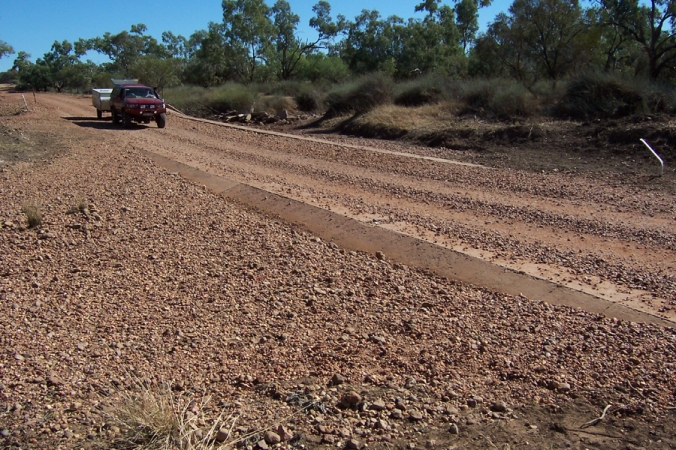
Unfortunately, the ghost’s reach extended all the way to Southern NSW. The little devil sent a bolt of lightning through my stop light wire the day I was to leave and promptly vapourised it from the rear of the Hilux to behind the dash. It took me three days to replace the wire and adjacent wires that had been melted. This was repeated again without warning at Cunnamulla but I had the job down to a fine art by then and it only took me four hours to replace the wire. This was really bad karma I thought, if it was trying to tell me something it certainly got my attention. I was beginning to think maybe there are some places a bloke shouldn’t go.
I was ready to turn back, but with the urging of my son Mat, we decided to press on regardless.
With some research I found that a lot of the elements of the story seemed true. The Wilga waterhole is indeed on Ruthven station, which is about twenty kilometers from Isisford on the river road to Yaraka in central West Queensland. Isisford is about one hundred and twenty kilometers of sealed road from Backall situated on the Kidman way. The hole is impossible to find without local knowledge. I was fortunate in that the owner of the station, Grant McPherson, turned out to be an excellent fellow and a font of local knowledge.
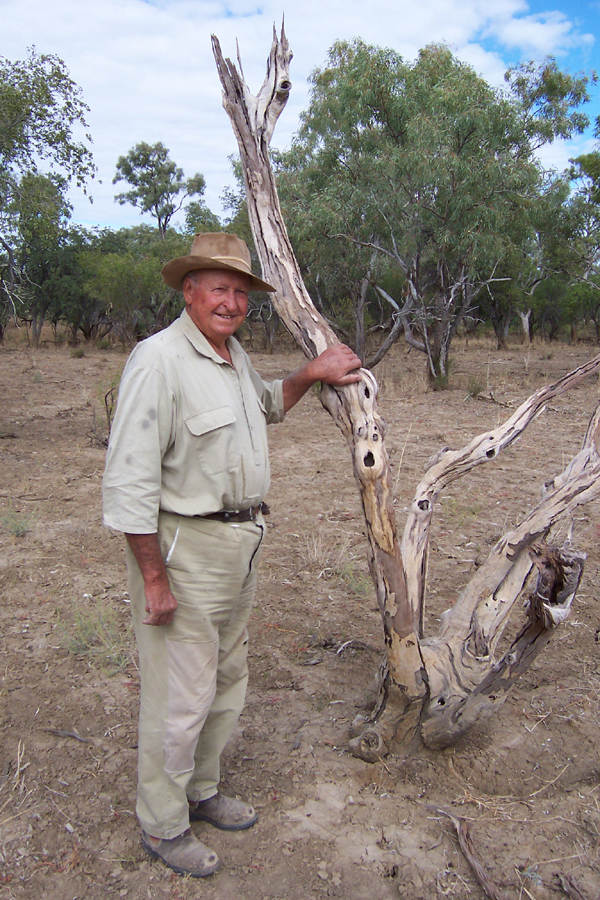
On the way to the station we passed a white monument that looked like it was designed by a beer slab stacker. It read “at this point, the party of Sir Thomas Mitchell turned South, crossed the Barcoo and headed back to Sydney”. I really couldn’t contemplate walking back to Sydney from here.
It took about one and three quarter hours to drive from the Ruthven station front gate to the site. The track varied from ironstone gibbers to sand and was easy going except the last five kilometers when the track disappeared altogether over flood damaged land, The rutted ground was dotted with silted tussocks which made it slow going.
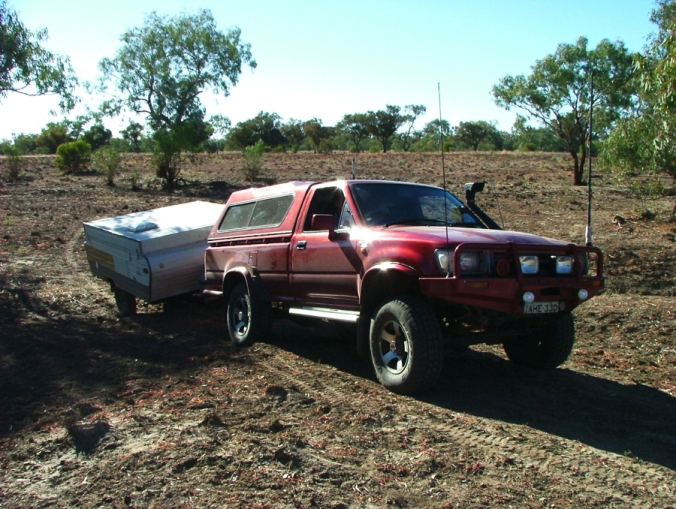
We arrived just before dark, set up camp and waited for any untoward audio to happen. As tea was being cooked, a quick scan of the surrounding area with a light revealed hundreds of pairs if shining violet eyes peering back as the local wolf spider population prepared to find theirs, I was quietly glad we were in a pop-top. Being the card-carrying chicken that I am, I packed a pair of earplugs, just in case. Lying there in dead silence, only punctuated by the chirping of crickets and the odd water bird call, I watched a few mindless assassin bugs circle the light overhead. Just as I was about to slip off into dreamland, the curious sound of tree boughs breaking one after another in quick succession over a minute or so filled my nightly quota of illogical bush noises and the earplugs went straight in.
The next morning dawn broke over the waterhole. The Wilga hole is a truly beautiful place. Although the Barcoo was bone dry, waterholes such as the Oma, thirty mile and the Wilga still hang in there. The Wilga hole is permanent and has never gone dry in living memory. Locals put this down to the depth of the hole and the ring of Dogwood and Coolabah trees preventing evaporation.
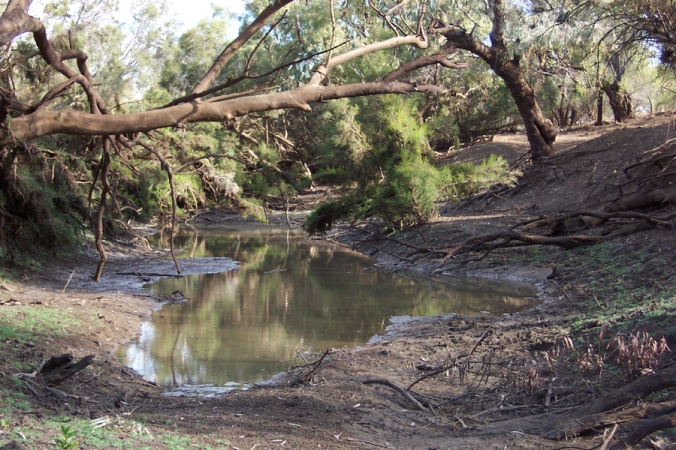
Fishing is good with Yellowbelly, Forkytails and possibly the odd old cod swimming around. The village of Isisford holds a popular fishing competition each year along the river. The banks of the hole can be quite steep in places and young children should be watched constantly.
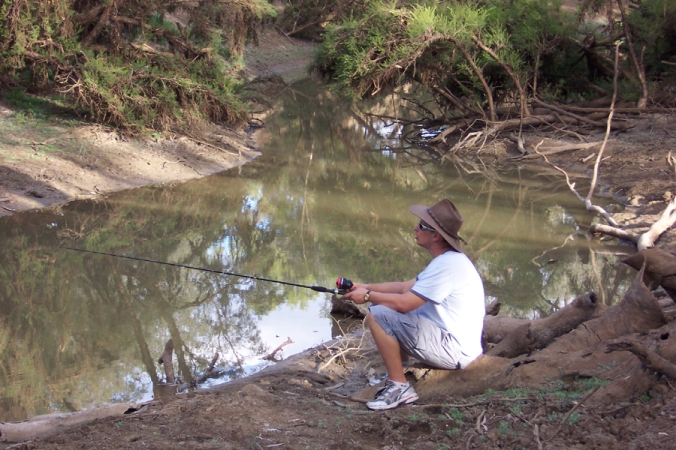
The Winter months are definitely the time to visit and you should carry your own water supply. Most of the animals are nocturnal and it took us a while to figure out some of the tracks in the sand. One track looked like a snake on drugs, we later discovered that the owner was a kind of land-going Goanna called a Perente that can grow to eight feet long. “That’s why there aren’t any snakes”, Grant suggested, “the Perentes ate them all!” Also, Perentes make a din at night as they rummage through your camp so keep your supplies out of reach (I’d hate to read in some tabloid later that “a Perente stole my baby!”).
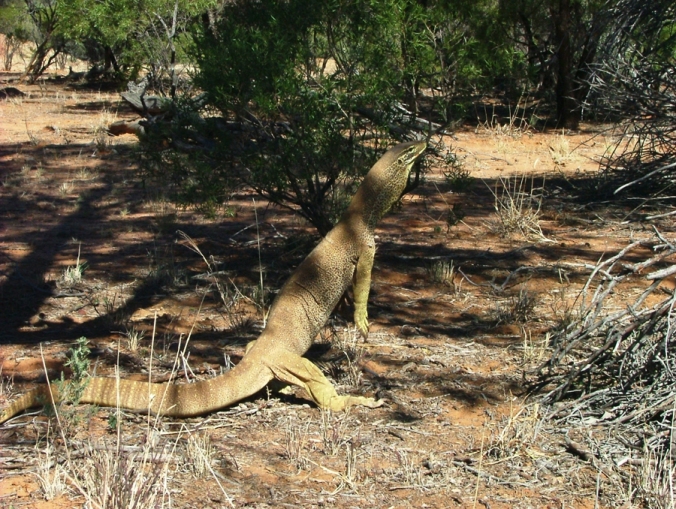
After confirming our position on the (very early 2004) GPS as 24deg.27min.68sec South 144deg.4min.56sec East we started walking due North along the parallel levee bank edge. I was surprised to find the ruin of the building that was mentioned in the story. The hearth and some of the forked bearers which held up the little stockyards still remain. Bits and pieces of discarded rusty horse gear litter the site. Even a greater surprise, was that there are two graves down a ways from the ruin.
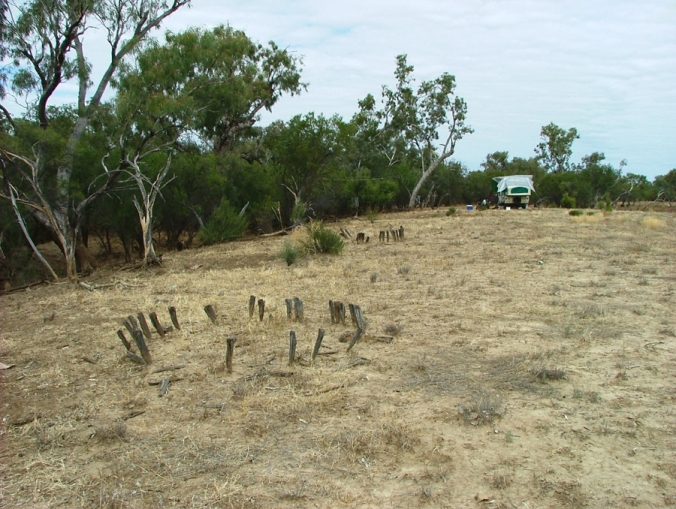
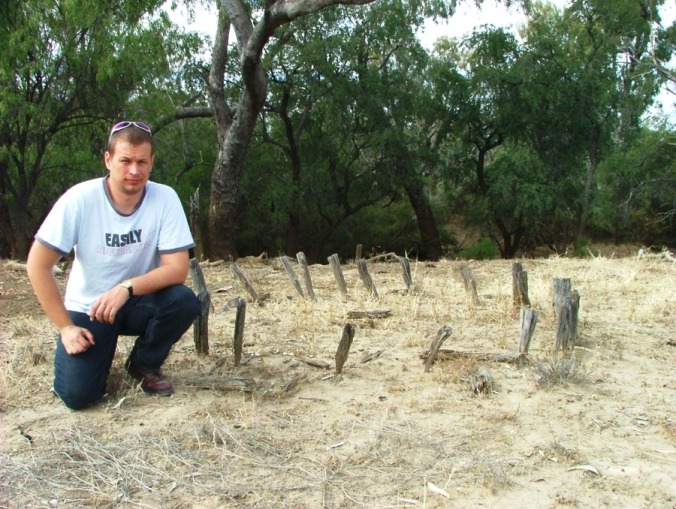
Local legend has it that these circular graves are the final resting place of the mother and her child. The grave perimeters are ringed with hand hewn ancient weathered wooden stakes. One is lager than the other and Ruthven’s owners are quite sensitive to possible damage that visitors may cause the graves, so please be respectful. Oddly enough, just down the hill toward the waterhole there is an old bottle tip.
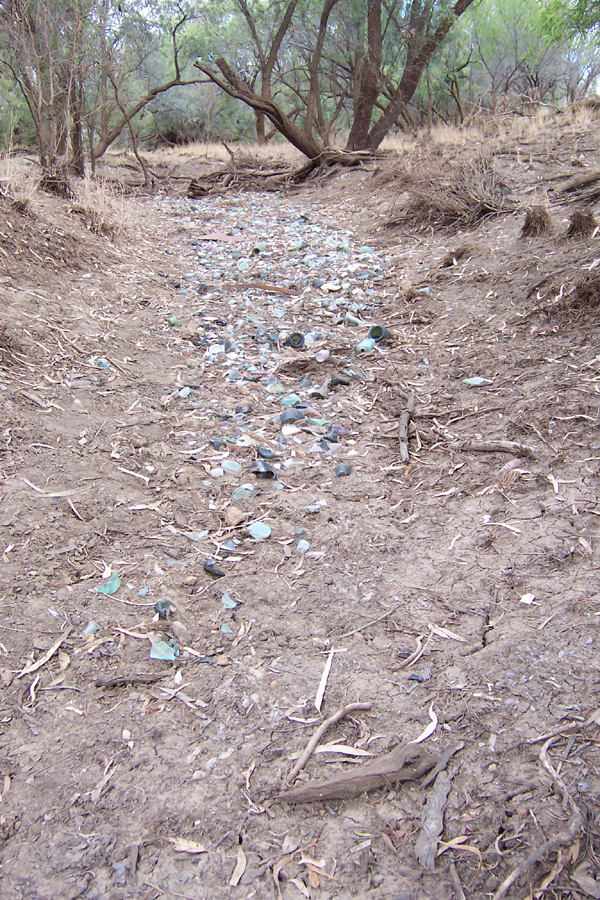
Some of these bottles date from the turn of the last century and I found it fascinating fossicking through the area.
The station owner, Grant, came for a visit in the morning and showed us around some of the old European mustering brush yards and another non-permanent hole that was used for sheep washing (complete with its own spin dryer). Luckily, the second night was as uneventful as the first (yep, still had the earplugs in). With the benefit of a full moon, we could see various fauna strolling past including kangaroos stopping for a look at our strange sprawling mechanical abode that looked so out of place in this area of myth and legend.
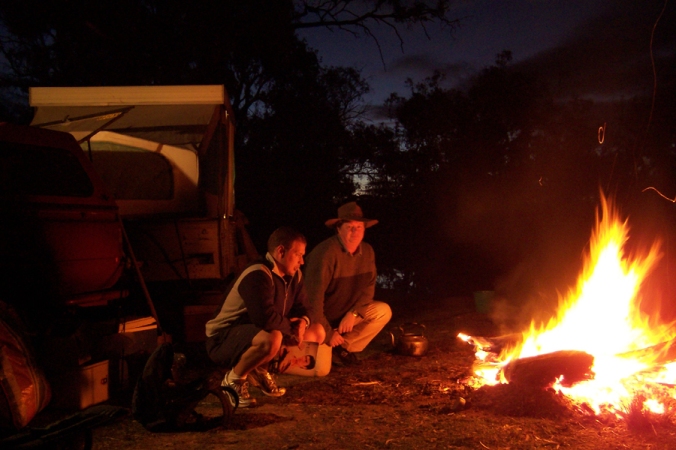
thanks for the story,i read about the water hole this morning& like you it aroused my interest.cheers mate .Tom.
LikeLike
No worries Tom, it was the most interesting place I’ve been to.
LikeLike
Hey that was good reading , my family all come from Cunnamulla and Thargomindah area…. when my husband and I next visit my home country with our 4 boys we would love to venture a little bit further to the Wiliga waterhole… is there any way you could forward to me any way to get in contact with the current owner to acquire permission to visit and camp overnight please… would be greatly appreciated. Thank you,
Jessica Girdler
LikeLike
Hi Jessica, no sorry, that was years ago now. I dont know who owns it now. I would look up the station’s phone number.
LikeLike